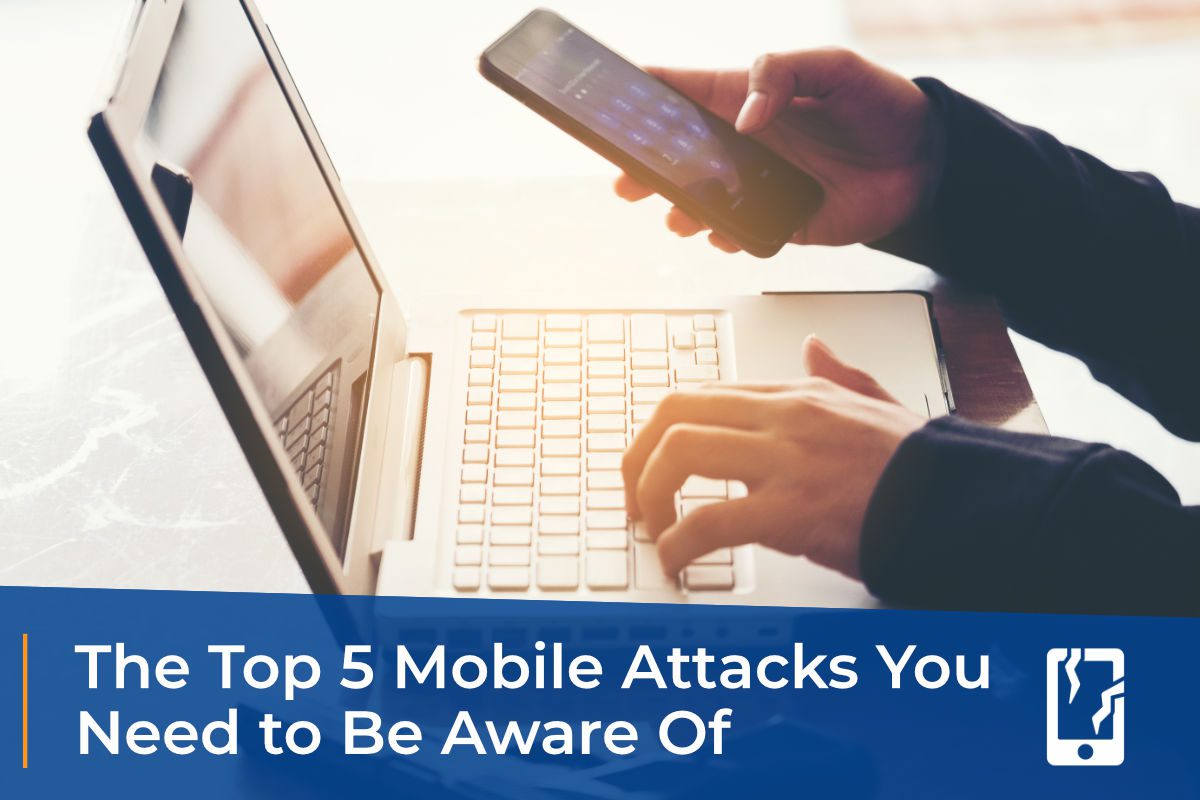
30 Sep The Top 5 Mobile Device Attacks You Need to Be Aware Of
Smartphones and tablets are often preferred devices for communications, web browsing, and accessing many types of apps. As a result, they’re more portable and can be used anywhere.
Many of the activities that used to be performed on traditional computers are now being performed on mobile devices. Instead of using computers, people now use mobile devices.
According to Microsoft, mobile devices now handle 80% of the workload in many enterprise organisations. More than half of all web searches are now conducted from mobile devices rather than desktop computers.
Over the past few years, mobile devices have become more targeted. Mobile malware and other exploits have been created to breach mobile devices as hackers realise they have access to the same sensitive information as PCs.
In 2020, approximately 36.5% of organisations were affected by mobile malware, and 2.5 million people unknowingly downloaded multiple mobile adware apps.
In terms of security, mobile devices should be treated the same as computers. The same security precautions apply to smartphones and tablets, including:
- Antivirus/anti-malware
- DNS filtering
- Automated OS and app updates
- Managed backup
Keep an eye out for mobile device threats that can compromise your data. Here are a few of them.
1. Mobile Malware Hidden in Apps
It’s not easy to tell the difference between a legitimate free app and one that contains malware.
Scammers will use flashy graphics and the app may even have a high star rating (most likely boosted through suspicious means). When downloaded, the app may even do what it says it will.
Malware can be hidden in the background, infecting a device as soon as the app is installed. On your phone or tablet, many of these apps hide by using the icon of a common system app (like settings or calendar).
The same types of malware that can infect a computer can also infect a mobile device, including ransomware, adware, spyware, trojans, and more.
2. Unprotected Communications
Did you ever send a password or credit card details over text message or messaging app? Checked to see if the communication was encrypted?
It is common for mobile device users to use various methods of communication without knowing how secure those methods are. Hackers can easily intercept sensitive information if it is not encrypted.
3.Public Wi-Fi & Man-in-the-Middle Attacks
Public Wi-Fi has long been known to be insecure, but people still use it when it’s available. Their goal is to save mobile minutes or get a faster connection.
On public Wi-Fi, 75% of people connect to email. Additionally, people will sign into apps (even sensitive ones like online banking) and shop online, entering their credit card information.
You are at high risk of a man-in-the-middle attack if you are using public Wi-Fi. The hacker connects to the same network and searches for victims with unprotected communications. Any type of data they transmit can then be captured.
If you want to connect to public Wi-Fi safely, you can use a VPN app, which encrypts your data.
4. Juice Jacking on Public USB Charging Stations
USB charging stations are another threat to public mobile security. It’s often a welcome sight when you’re running low on battery power. Nonetheless, hackers can set up fake charging stations in public areas by infecting USB ports with malware.
When you insert your USB cord to charge your phone, the malware copies all the data on your phone and/or infects it with malware. The USB cable is not only used for charging, but for data transmission as well.
You should avoid public USB charging ports and instead use your power adapter that plugs into an outlet. If USB charging is your only option, you can buy a “charge-only” USB cord.
5. Non-Updated Devices
There are approximately 40% of Android devices running outdated operating systems that no longer receive vital security updates.
An exploit that exploits a code vulnerability in the OS or one of the installed apps is easier for hackers when your mobile device isn’t updated.
Companies aren’t paying attention to how many employees’ work devices are running current operating systems, which puts their networks at risk.
Many of these updates include critical security patches, so you should keep your apps and OS updated.
Ask Us About Mobile Device Security Solutions
Mobile devices handle so much computing work these days that they must be properly protected. Get in touch with us to learn more about mobile security and management.


